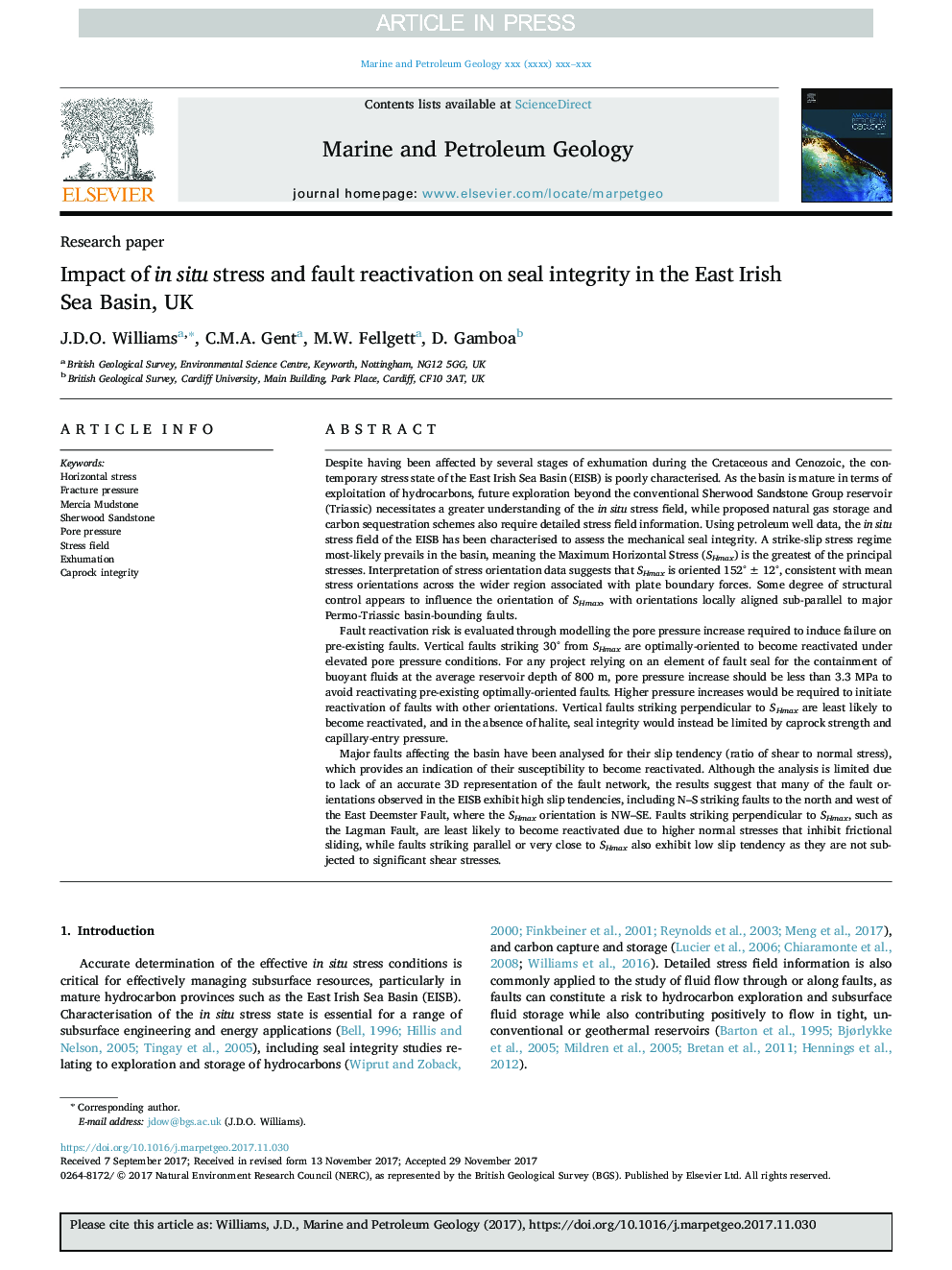| Article ID | Journal | Published Year | Pages | File Type |
|---|---|---|---|---|
| 8909159 | Marine and Petroleum Geology | 2018 | 12 Pages |
Abstract
Major faults affecting the basin have been analysed for their slip tendency (ratio of shear to normal stress), which provides an indication of their susceptibility to become reactivated. Although the analysis is limited due to lack of an accurate 3D representation of the fault network, the results suggest that many of the fault orientations observed in the EISB exhibit high slip tendencies, including N-S striking faults to the north and west of the East Deemster Fault, where the SHmax orientation is NW-SE. Faults striking perpendicular to SHmax, such as the Lagman Fault, are least likely to become reactivated due to higher normal stresses that inhibit frictional sliding, while faults striking parallel or very close to SHmax also exhibit low slip tendency as they are not subjected to significant shear stresses.
Keywords
Related Topics
Physical Sciences and Engineering
Earth and Planetary Sciences
Economic Geology
Authors
J.D.O. Williams, C.M.A. Gent, M.W. Fellgett, D. Gamboa,
